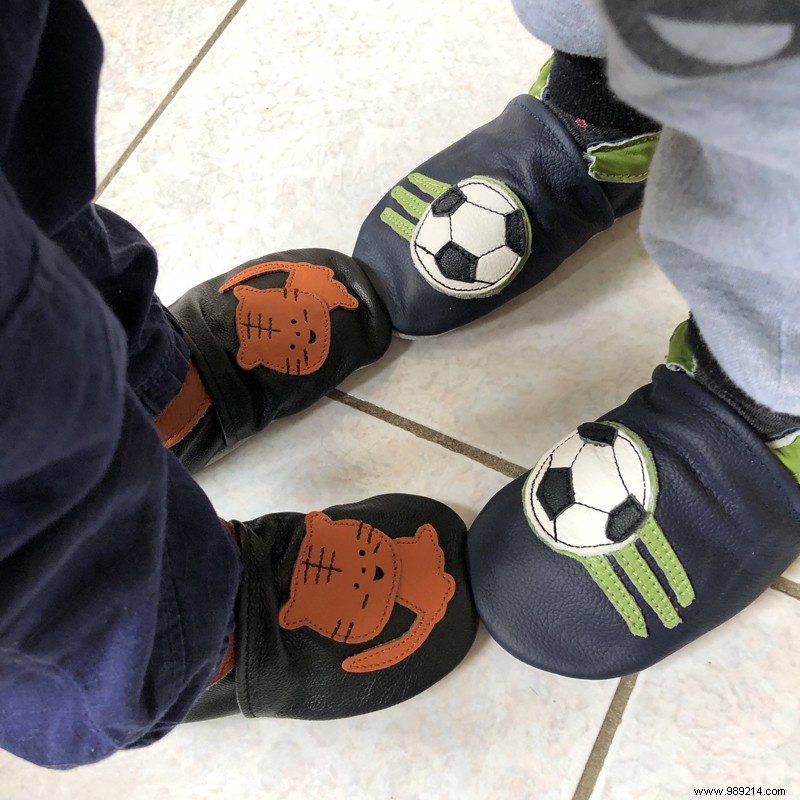
We all love baby feet. This is why we see many brands offering us a wide choice of slippers, shoes, boots, all cute than the other!
But choosing THE right shoe for babies' first steps is not trivial, because you have to take into account posture, balance, motor skills, etc... It is therefore important that these little feet are free to grow without constraint. while being protected.
When my children arrived, my mother-in-law commented on my choice of slippers… At the time, babies were very quickly put on lace-up leather boots, high and very rigid. Proponents of this type of shoe explain that a child's foot is fragile, that the ankle must be supported with firmly laced high shoes. The shoes would therefore not only have a role of protection, but also that of "tutor" of the foot so that it grows properly.
Today, according to osteopaths, this is completely false...
Let our children walk barefoot! Nothing better so that they can develop their muscles and their balance at their own pace.
Walking barefoot allows you to develop the sensory receptors of the foot which manage both superficial (temperature, roughness of the ground, etc.) and deep (balance, general posture) information. So your baby will be completely free to discover his motor skills without hindrance, especially if you are inspired by the principles of free motor skills.
If you feel the need to protect baby's feet from the cold or the sun, you can put on non-slip socks or soft leather slippers like the models below that we have for our children from www.nat-essence.fr.. The site offers many soft slippers and various patterns that will appeal to the little ones. My little men opted for the “Cat” and “Balloon” design, they wear them every day at the moment.


They offer protection to the child's foot while allowing them complete freedom of movement.
Baby's feet Bare, in soft booties or socks, feet are of primary importance for apprehending the world
Once your child is walking you will need a “real” pair of shoes to go outside to play, but leave him barefoot or in soft slippers as often as possible when the place allows it.
With a little luck he will keep this habit all his life! At any age, what could be better than feeling the fresh grass or the warm sand under your feet? In addition to being good for your body, it's good for your morale!
Once the child walks regularly, it quickly becomes necessary to invest in a pair of shoes to face the gravel, asphalt and uneven ground of walks in the forest.
Up to three years, the bones of the child's foot have not finished solidifying, so it is advisable not to compress it too much in a shoe that is too rigid. The sole must be solid but flexible (you can bend the shoe without forcing it like a foot would when walking), the shoe can be slightly high but must not compress the malleolus (the 2 bony balls on either side of ankle).
baby taking his first steps
Shoes with flexible but resistant leather soles, suitable for the first escapades of this brand new walker
To summarise, and at any age, the ideal is to leave enough freedom of movement to the foot in order to work on its musculature and its ability to adapt, while offering him appropriate protection for each activity.